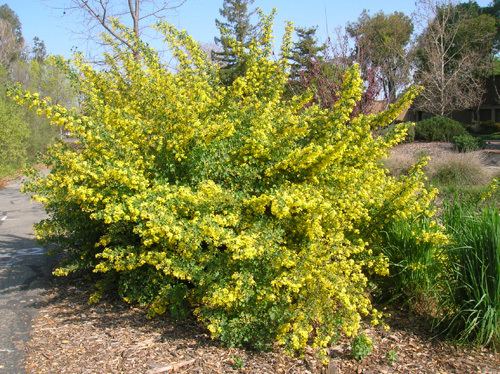Family Grossulariaceae Rank Species | Higher classification Currant | |
 | ||
Similar Currant, Ribes sanguineum, Ribes alpinum, Jostaberry, White currant | ||
The new berry plant fourberry orangesse ribes aureum
Ribes aureum, known by the common names golden currant, clove currant, pruterberry and buffalo currant, is a species in the genus Ribes. It is native to Canada, most of the United States (except the southeast) and northern Mexico. The species Ribes odoratum is closely related, and sometimes named Ribes aureum var. villosum.
Contents
- The new berry plant fourberry orangesse ribes aureum
- Identifying a currant bush ribes aureum
- Description
- Varieties
- Cultivation
- Culinary and medicinal
- Diseases
- References

Identifying a currant bush ribes aureum
Description

Ribes aureum is a small to medium-sized deciduous shrub, 2–3 metres (6.6–9.8 ft) tall. Leaves are green, with 3 or 5 lobes, turning red in autumn.

The plant blooms in spring with racemes of conspicuous golden yellow flowers, often with a pronounced, spicy fragrance similar to that of cloves or vanilla. Flowers may also be shades of cream to reddish, and are borne in clusters of up to 15. The shrub produces berries about 1 centimeter (0.4 inch) in diameter from an early age. Ripe fruits, amber yellow to black, are edible raw, but very tart, and are usually cooked with sugar. The flowers are also edible.
Varieties

Cultivation

Ribes aureum is widely cultivated as an ornamental plant, in traditional, native plant, drought tolerant, and wildlife gardens, and natural landscaping projects. Unlike some other species of currants, Ribes aureum is in the remarkably drought-tolerant group of Ribes. Named cultivars have been introduced also.
Culinary and medicinal
Golden currant is also planted for the edible berries. Although flowers are hermaphroditic, the yield is greatly benefited by cross-pollination.
The berries were used for food, and other plant parts for medicine, by various Native American groups across its range in North America.
Diseases
This currant species is susceptible to white pine blister rust (Cronartium ribicola), a fungus which attacks and kills pines, so it is sometimes eradicated from forested areas where the fungus is active to prevent its spread.
